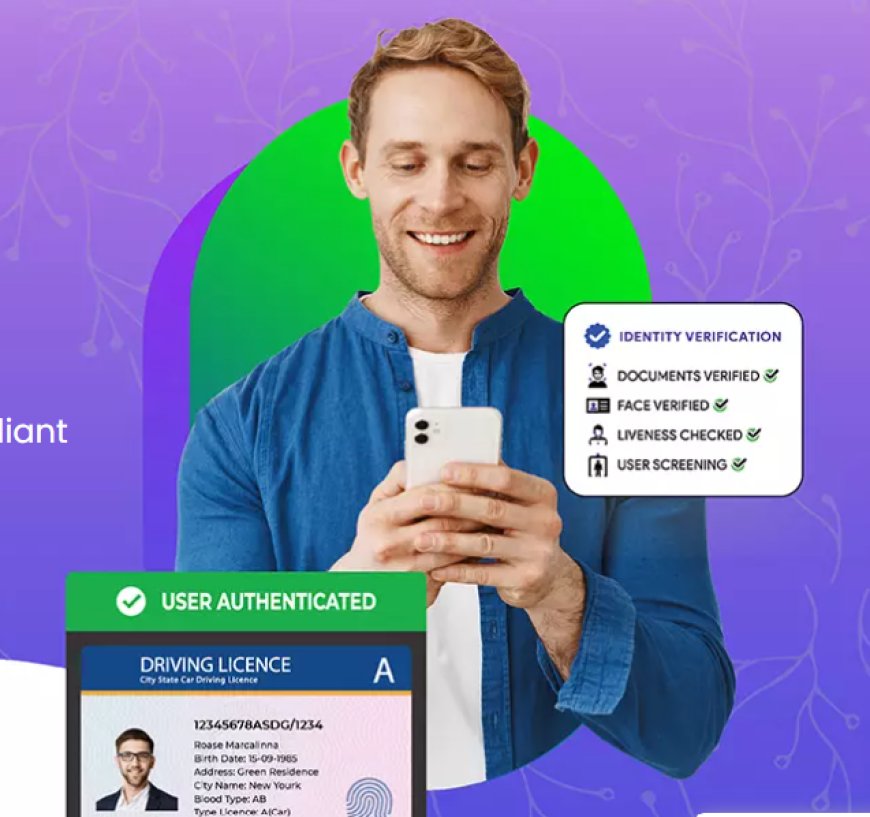Identification Verification and Biometric Authentication Services: A Guide to Modern Security Solutions
The importance of secure and efficient identification verification and biometric authentication services cannot be overstated.

In today’s digital age, the importance of secure and efficient identification verification and biometric authentication services cannot be overstated. As businesses and governments increasingly move online, ensuring that individuals are who they claim to be is essential for preventing fraud, protecting sensitive information, and maintaining trust. These services have become integral to sectors such as finance, healthcare, and e-commerce, where verifying identities is crucial to safeguarding both users and organizations.
Understanding Identification Verification Services
Identification verification services are processes and technologies designed to confirm an individual's identity using various methods, ranging from traditional ID checks to advanced digital solutions. These services play a vital role in a wide range of applications, including onboarding new customers, authorizing transactions, and granting access to restricted areas or sensitive information.
Traditional vs. Digital Verification Methods
Traditionally, identity verification involved manual checks, such as presenting a physical ID card, passport, or driver’s license. This process, while straightforward, is often time-consuming and prone to human error. Additionally, physical documents can be forged, stolen, or tampered with, making traditional methods less reliable in the face of sophisticated fraud attempts.
Digital verification, on the other hand, leverages modern technology to streamline and enhance the verification process. This can involve scanning and analyzing government-issued IDs using optical character recognition (OCR) technology, cross-referencing data with government databases, and utilizing artificial intelligence (AI) to detect inconsistencies or signs of tampering. Digital methods are faster, more accurate, and provide a more seamless experience for users, making them increasingly popular in today’s fast-paced world.
The Rise of Biometric Authentication Services
While identification verification focuses on confirming who a person is, biometric authentication goes a step further by using unique biological traits to verify identity. Biometric authentication services use characteristics such as fingerprints, facial features, voice patterns, and iris scans to authenticate individuals. Because these traits are unique to each person, biometric authentication offers a higher level of security compared to traditional methods.
Types of Biometric Authentication
1. Fingerprint Recognition: One of the most widely used forms of biometric authentication, fingerprint recognition analyzes the unique patterns of ridges and valleys on a person’s fingertip. This method is commonly used in smartphones, access control systems, and timekeeping devices.
2. Facial Recognition: Facial recognition technology uses AI and machine learning to analyze and compare facial features. This method has gained popularity due to its non-intrusive nature and is often used in smartphones, airports, and security systems.
3. Voice Recognition: Voice recognition technology analyzes vocal patterns, pitch, and tone to authenticate an individual. It is commonly used in phone-based customer service systems and secure voice-controlled applications.
4. Iris and Retina Scanning: Iris and retina scanning involve analyzing the unique patterns in a person’s eye. While highly accurate, these methods are more commonly used in high-security environments due to their complexity and cost.
Benefits of Biometric Authentication
Biometric authentication offers several advantages over traditional methods. First and foremost, it provides a higher level of security since biometric traits are difficult to replicate or steal. Additionally, biometric authentication is more convenient for users, as they do not need to remember passwords or carry physical tokens. This combination of security and convenience has made biometric authentication an attractive option for organizations looking to enhance their security measures.
The Role of Biometric Authentication in Identity Verification
Biometric authentication is increasingly being integrated into identification verification processes to create a multi-layered security approach. For example, during the onboarding process for a new customer, a financial institution might use digital ID verification to confirm the validity of a government-issued ID, followed by facial recognition to match the ID photo with the individual’s live image. This multi-step process ensures that both the document and the person presenting it are legitimate.
Challenges and Considerations
Despite the numerous benefits, identification verification and biometric authentication services are not without challenges. Privacy concerns are at the forefront, as biometric data is highly sensitive and its misuse can have serious consequences. Organizations must ensure that they comply with data protection regulations, such as the General Data Protection Regulation (GDPR) in Europe, and implement robust security measures to protect biometric data from breaches.
Another challenge is the potential for bias in biometric systems, particularly in facial recognition technology. Studies have shown that these systems can be less accurate for individuals with darker skin tones or other minority groups. As a result, companies developing biometric authentication solutions must work to eliminate bias and ensure their systems are fair and inclusive.
The Future of Identification Verification and Biometric Authentication
As technology continues to advance, the capabilities of identification verification and biometric authentication services will only improve. We can expect to see more sophisticated AI algorithms, increased integration of biometric data with other forms of authentication, and greater adoption across industries. However, it will be crucial for organizations to balance innovation with privacy and ethical considerations to ensure that these technologies are used responsibly.
In conclusion, identification verification and biometric authentication services are at the forefront of modern security solutions. They offer unparalleled security and convenience, making them essential tools for organizations in today’s digital landscape. As these technologies evolve, they will continue to play a pivotal role in safeguarding identities and protecting sensitive information in an increasingly connected world.
What's Your Reaction?





























